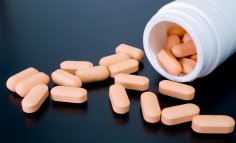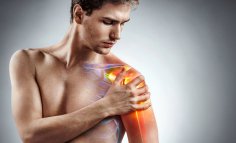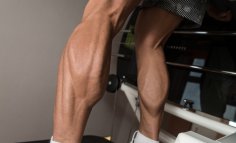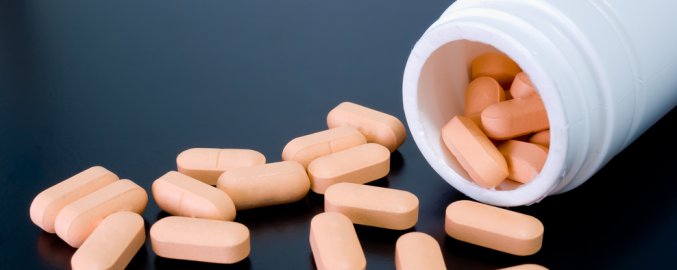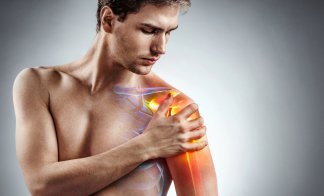enda mer men på engelsk:
Cyclical Ketogenic Diets Part 1
Copyright Lyle McDonald 1996
Abstract
After roughly a 20 year absence from the public eye, the ketogenic diet
has made a reappearance in both the fields of weight loss as well as sports
nutrition. Books like "Dr. Atkins New Diet Revolution", "Protein Power" by
the Eades', and to a lesser degree "The Carbohydrate Addicts Diet" by the
Hellers have brought low carb dieting back into the weight loss arena.
Additionally, in the field of sports nutrition, two slightly different
approaches have entered the fray in the form of "The Anabolic Diet" created
by Dr. Mauro DiPasquale and "Bodyopus" created by Dan Duchaine. Rather
than suggesting a low carbohydrate approach indefinitely, these two diets
advocate a cyclical ketogenic approach combining 5 days of low carbohydrate
intake with a 2 day carb-up akin to what endurance athletes used to do
prior to competition.
Unfortunately, it is difficult to draw any absolute conclusions about this
approach from article written about it as the groups involved in the debate
invariably have some vested financial interest in either promoting or
decrying the approach. In this article, I simply want to examine some of
the theoretical bases of the cyclical ketogenic diet and if it has any
merit. Additionally, possible health concerns will be discussed.
Some Basic physiology
What are ketones?
Ketone or ketone bodies (KB) are a byproduct of fat metabolism. KB's are
generated in the liver due to the actions of glucagon (15). There are two
KB's which circulate freely in the bloodstream. They are acetoacetate and
beta-hydroxybutyrate. Most aerobic tissues, including the brain, skeletal
muscle, and the heart can oxidize KB's for fuel (8). Under normal blood
sugar conditions, glucose is the preferred fuel in the brain, muscles and
heart. Under these conditions the rate of ketone body utilization by
tissue depends in part on their concentration. Under normal conditions, KB
metabolism is minimal, perhaps 1-2% of total energy expenditure. In
diabetic ketotic patients, this can increase to 5% (8).
Glucagon, insulin and ketogenesis:
The formation of KB's and utilization of fuel is ultimately controlled by
the circulating levels of insulin and glucagon. Insulin is a hormone
released from the pancreas in response to eating carbohydrates. Glucagon
is insulin's antagonistic hormone and is only present when insulin levels
fall to quite low levels. In the liver, high glucagon levels direct FFA
away from TG synthesis and towards beta-oxidation. Glucagon also activates
adipose tissue lipase which activates lipolysis. Glucagon's ketogenic and
lipolytic effects are inactivated by even small amounts of insulin. To
achieve sufficient glucagon concentrations for increased
ketogenesis/lipolysis, blood glucose levels must drop to around 50-60 mg/dl
and insulin must drop almost to zero. This drop in insulin can occur with
complete fasting, exercise, or by simply restricting carbohydrate intake to
below 30 grams per day. Within about 3 days of carbohydrate restriction,
blood glucose will fall below 60 mg/dl, insulin levels will drop to zero
and glucagon levels will increase causing an increase in KB formation.
With exercise training, ketogenesis should occur more quickly and ketosis
established. (2)
How to induce ketosis?
Ketosis (defined as the buildup of the KB's in the bloodstream) will occur
under several conditions including: fasting, after prolonged exercise, and
when a high fat diet is consumed. (7,8,15).
Once ketosis is established (i.e. when ketone concentration in the blood
is higher than glucose concentration), ketones will become the preferred
fuel by all three tissues providing up to 75% of the fuel utilized (7).
The brain, which normally utilizes glucose exclusively for fuel will, after
a period of 2 to 3 weeks, switch almost exclusively to using KB's for fuel
(1, 6, 15). The time delay for the brain to make this metabolic shift has
some major implications which need to be discussed. As described further
below, one study (22) found a decrement in mental flexibility during the
first week of adopting aketogenic diet. Therefore, for individuals who's
jobs or livelihood requires great mental acuity, the ketogenic diet
approach (cyclical or otherwise) may not be an ideal one.
The ketogenic ratio
Food can be rated as either ketogenic or anti-ketogenic dependent on their
conversion to glucose in the body. Dietary fats are the most ketogenic
item, converting to glucose with only 10% efficiency. Proteins are in the
middle, converting to glucose with about 58% efficiency (this is due to the
fact that some dietary amino acids are ketogenic in nature, meaning that
they convert to ketones, and others are glucogenic, meaning that they
convert to glucose) (2). Dietary carbohydrates convert to blood sugar with
100% efficiency making them completely anti-ketogenic in nature. To
rapidly establish ketosis, a minimum ratio of 1.5 grams of fat for each
gram of protein and/or carbohydrate is recommended. This would provide a
ketogenic ratio of 1.5:1. While higher ketogenic ratios are used
clinically, this author can see no need to use a higher ratio of fat to
protein and carbs for a healthy athlete. (5)
What exactly does ketosis mean?
Ketosis simply refers to a metabolic state where the concentration of KB's
in the blood builds to higher than normal levels. As will be discussed
below in further detail, this should not be equated with the ketoacidosis
which occurs in diabetics.
The presence of ketosis through whatever means implies two things (15):
1. that lipid energy metabolism has been activated
2. that the entire pathway of lipid degradation is intact.
Normally, there is fairly tight control on the production of KB's. Except
in pathological conditions such as diabetes, excess ketones will simply be
excreted in the urine (1). This allows an individual to check for the
presence and urinary concentration of ketones by utilizing Ketostix.
Metabolic effects of ketogenic diets
Establishment of ketosis, even in the short term, has the effect of
increasing the body's ability to utilize fat for fuel. After adaptation to
ketosis, there is a decrease in fasting RQ (an indicator of relative fuel
metabolism with lower values indication greater reliance on fat metabolism
versus carbohydrate metabolism) (7). Also, there is a decrease in glucose
oxidation during ketogenic diets as KB's are providing much of the body's
energy needs (18). Additionally, adaptation to a ketogenic diet increases
fat oxidation during exercise even in trained individuals (14, 17).
One point of contention regarding ketogenic diets is the supposed protein
sparing effect when compared to a eucaloric diet with a high carbohydrate
intake. Due to methodological differences, some studies have found a
decrease in protein utilization while others have found an increase (8).
However, available data seems to support the idea that ketosis spares
protein from being used for energy. Since there is essentially an
unlimited supply of fat which can be converted to ketones, and since
ketones can be used by all oxidative tissues, there should be little need
to oxidize protein to generate glucose through gluconeogenesis. There is
an obligatory protein requirement which must be met of about 30 grams per
day. And, to be safe, an intake of 60-75 grams of protein is recommended
(7).
Other effects of low carbohydrate diets
Additionally, a low carbohydrate intake will allow for overall greater
lipolysis and free glycerol release when compared to either high
carbohydrate or normal diets (7, 12). This is mediated in part by the lack
of insulin, which has a lipolysis blocking action even at low
concentrations as well as increases in other lipolytic hormones such as
growth hormone, glucagon, the catecholamines, and glucocorticoids. (7)
Additionally, growth hormone levels increase on low carb diets which will
further help to prevent the inevitable protein losses which occur when
calories are restricted (2, 7).
Hopefully the above discussion adequately describes what occurs when
ketosis is established through the combination of carbohydrate restriction,
a sufficient ratio of fat to protein plus carbohydrate intake, and exercise
training. This suggests that the lowering of insulin, and the resultant
hormonal mileu created may optimize the oxidation of fat when fat loss is
the goal. However, as many individuals find completely adequate success
with a less stringent diet, this type of extreme approach is likely not
warranted for everyone. Additionally, a similar hormonal mileu (i.e.
lowering of insulin, etc.) can occur under normal dietary conditions
through various means. A replacement of higher glycemic index
carbohydrates with lower GI carbs will lower basal insulin levels as will a
high fiber intake. Cardiovascular exercise done first thing in the morning
before any calories are consumed may create a similar hormonal picture due
to the lowering of blood glucose after an 8 hour fast. Additionally, the
performance of cardiovascular exercise following high intensity resistance
training should also allow for greater fat utilization due to lowered blood
glucose and insulin levels.
However, we have not yet discussed the most unique feature of the
cyclical ketogenic which is the high carbohydrate phase on the weekends.
The validation of the weekend carb-up is the point upon which the cyclical
ketogenic diet ultimately hinges. Unfortunately, direct data on healthy
athletes is sorely lacking and only inference can be drawn from other data.
The problem with all fat loss diets is the inevitable loss of lean body
mass (i.e. muscle) which will occur. This leads to a loss of muscle tissue
and a slowing of metabolism making weight regain highly likely. While
ketogenic diets may limit muscle protein loss more so than high
carbohydrate diets, the loss of some muscle will occur. The weekend
carb-up, in addition to refilling muscle glycogen stores for the next
week's training, may also have the potential to stimulate anabolism and
rebuild some if not all of the lost muscle tissue. What is not understood
is why the period of high carbohydrate intake does not undo the metabolic
adaptations to the ketosis is established during the week. It seems
possible that, for the same reason it takes several weeks to days for the
body to adapt to a ketogenic diet, a similar amount of time may be required
to de-adapt or, rather, readapt to normal carbohydrate metabolism. This
area requires more direct study before any conclusions can or should be
drawn.
The carb-up
With the consumption of a normal carbohydrate adequate diet, muscle
carbohydrate stores should remain filled. Under normal circumstances, the
muscles contain approximately 350 grams. With glycogen depletion caused by
exhaustive exercise followed by a high carbohydrate intake, these levels of
muscle carbohydrate can be nearly doubled (19).
Under normal dietary conditions, exercise has been shown to increase
insulin sensitivity which increases the muscle's ability to accept insulin
at the receptor level (12) but this increase in insulin sensitivity only
occurs in the muscles trained. The increase seems related to glycogen
depletion in the worked muscles. Additionally, following a low
carbohydrate diet, but not after a high carbohydrate diet, glycogen
synthase activity (the enzyme which stores dietary carbohydrate in the
muscle) is increased further (4). So, all of the pieces are in place. By
combining a high fat diet, exhaustive exercise training (which should be
performed on Friday prior to beginning the carbohydrate loading period) and
a high carbohydrate intake, glycogen supercompensation can occur.
However, while complete super compensation may take three to four days, the
majority of glycogen storage will occur in the first 24 hours. (19). The
muscles are capable of storing from 9 grams of carbohydrate per kg of lean
body mass all the way up to 16 grams of carbs per kg lean body mass. The
above is nothing that wasn't already known. Endurance athletes looking to
improve performance used to combine 3 days of exhaustive exercise with a
carbohydrate restricted diet identical to what was described above to
accomplish glycogen super compensation to provide greater energy stores for
their events. What about the rebuilding of muscle that was alluded to
above?
For every gram of carbohydrate stored in the muscle, assuming adequate
water intake, 4 grams of water will be stored additionally. With a normal
mixed diet, muscle carbohydrate stores are roughly 350 grams for a person
with 65kg of lean body mass (19). At 4 grams of water per gram of
carbohydrate, this is 1400 grams of water stored in the muscles. With
super compensation to 16 grams per kg lean body mass, 1040 grams of
carbohydrate can potentially be stored which would yield 4160 grams of
water, almost a 3 fold increase.
Recent research supports the idea that muscle protein anabolism may be
regulated by cellular hydration state at least in certain
pathophysiological states like burn trauma. According to this hypothesis,
cellular dehydration sends a proteolytic (protein breakdown) signal to the
cell while cellular hydration (and, presumably super hydration as would
occur with glycogen super compensation) would send a powerful anabolic
signal to the cell (9,10). Along with this, after 3 days on a high fat
diet, the insulin response to a standard glucose load is increased compared
to a high carbohydrate diet (20). Hyperinsulinemia is another stimulus for
anabolism. (3) So, it seems plausible (although direct research is awaited
to support or refute this) that glycogen super compensation, along with the
powerful anabolic signal sent by the almost three fold increase cellular
hydration could rebuild any muscle lost while following a low carbohydrate,
ketogenic diet. What is not understood at this time is why endurance
athletes, performing an identical form of glycogen super compensation do
not see increases in muscle mass. This suggests that the simple act of
carbohydrate restriction and protein breakdown followed by carbohydrate
loading may not independently promote anabolic processes.
What about side effects?
Probably the largest side effect reported with ketogenic diets is fatigue,
especially during the initial adaptation to ketone metabolism, especially
in the brain. A recent study found that, during the first week of a
ketogenic diet, performance on tests indicative of mental flexibility were
impaired. These affects abated as the diet was continued (21).
One question regarding ketogenic diets is the potential effects on blood
lipid profile. Anecdotally, many individuals report an improvement in
blood lipid profile but this author could only find one reference to
cholesterol levels. During 4 weeks of adaptation to a ketogenic diet,
cholesterol levels did increase from 139 to 200. What effects on blood
lipid longer periods of ketosis would have had are currently unknown. (18)
This underscores the absolute need for anyone desiring to try this approach
to monitor blood lipid levels with frequent blood testing.
Unfortunately, no direct research has been done in the last 15 or so years
looking at untoward side effects of the ketogenic diets. While it is
attractive to draw inference from studies of epileptic children, for whom
ketosis appears to control a majority of intractable seizures and who are
kept in deep ketosis for periods of a year or more (5,13), this sub
population may or may not be indicative of the effects of such a diet in
healthy individuals. Additionally, the fact that the diet is abandoned
after that period of time suggests that long term ketosis may have unwanted
effects. Or that long term adaptation to the ketogenic diet is sufficient
to control the seizures without having to maintain the diet.
Additionally, ketogenic diets have shown some promise in the treatment of
certain types of tumors by starving the tumor of glucose while providing
adequate energy substrates in the form of KB's to other tissues (16).
But, as with the subgroup mentioned above, it would be exceedingly
premature to draw inference as to the long term side effects which may
occur with a ketogenic diet from these studies. The longest study on
ketogenic diets found by this researcher in the last 15 years were only 4
weeks in duration. Therefore, it can only be concluded at this time that
long term side effects of ketogenic diets are not currently known.
Considering that many disease states such as coronary artery disease can
take years to manifest themselves, caution must be taken.
As with any radical change in diet or food intake, especially one such as
the ketogenic diet which causes extreme changes in the body's biochemistry,
individuals must take care to monitor their health status. Tracking blood
lipid profile and other indicators of heart disease as well as other bodily
functions will help to indicate if any negative effects are occurring in
the body and frequent diagnostic tests are highly recommended.
Additionally, it is currently unknown whether adaptation to long term
ketosis can be reversed without detrimental effects to normal metabolism.
That is to say, it is conceivable that the metabolic effects caused by such
a major dietary change could cause irreversible changes to normal
metabolism.
Some comment should be made is in regards to nutrient intake. Due to the
restrictive nature of ketogenic diets the potential exists for
micronutrient deficiencies. In the studies on ketogenic diets, the
researchers provided supplementation of a multi-vitamin/mineral tablet to
ensure adequate micronutrient intake. It may be advisable for those why
try such a diet independently to supplement with a multi-vitamin/mineral
providing 100% of the RDA. Additionally, since the consumption of nutrient
dense foods such as vegetables is severely restricted during the week,
these foods should be consumed during the carbohydrate loading phase so
that absolute reliance on supplements is not required.
Another thing that deserves mention is this: the high dietary fat intake
necessitated by the ketogenic diet is such that increased free radical
production could potentially occur. However, this area requires further
direct study before any conclusions can be drawn. As with other potential
health concerns, this further underscores the need for an individual to
closely monitor their health status before and while beginning such a
dietary regime.
The issue of ketoacidosis
A final criticism that arises relative to ketogenic diets is the extreme
danger of uncontrolled ketoacidosis. KB's are acidic in nature. The
uncontrolled buildup of KB's would lower pH levels of the blood causing
death. However, we must differentiate between ketosis as it occurs in
diabetics and ketosis as it occurs in non-diabetics. Recall that ketosis
occurs when insulin levels drop and glucagon levels rise. In diabetics,
this can occur even with high blood sugar levels due to the inability of
the pancreas to secrete insulin. In this situation, glucose production is
augmented but peripheral utilization is reduced. Blood sugar rises to
exceedingly high levels of 300 to 2000 mg/dl (normal blood glucose
concentration is 80-120 mg/dl). But, due to the low insulin to glucagon
ratio, ketogenesis is also stimulated. However, due to the presence of
high blood glucose levels, ketoacid use is prevented. Thus, KB
concentration increases to high levels, eventually lowering blood pH and
causing diabetic ketoacidosis and eventually death. Contrast this to
ketosis as it occurs in conditions such as fasting, or carbohydrate
restricted/high fat diets. In this case, blood sugar levels are subnormal
and KB's do not buildup in the bloodstream as they will be utilized by
peripheral tissues for energy (2).
Additionally, ketoacidosis in diabetics seems related to a defect causing
increased production. Normally, there is a negative feedback loop whereby
excess ketones prevent further production. The slight difference in KB
clearance versus KB appearance corresponds to urinary excretion which is
always below 10% of total turnover. (1)
As further evidence, exercise, which is ketogenic in nature, does not
cause the expected increase in KB concentrations so a negative feedback
loop appears also to be present. (6) This suggests that out of control
ketoacidosis should not occur in normal individuals but, again, there is no
real long term data on this aspect of the diet. Regular checks of urinary
KB concentration (utilizing Ketostix), blood glucose (using a glucometer),
and other indicators of potential problems are highly recommended.
In conclusion, with the available data, the cyclical ketogenic diet may
have merit for certain applications. The carbohydrate restriction coupled
with the induction of ketosis seems to promote a hormonal mileu conducive
to fat loss. The carbohydrate loading process on the weekend is the least
understood (and least researched) aspect of this dietary approach and much
further elucidation of the possible anabolic processes is required before
any definite conclusions can be drawn. The long term health effects in
healthy individuals of this dietary approach are unknown. The only
studies over four weeks in length were conducted on populations which do
not allow extrapolation to healthy individuals. Again, more research is
needed to establish the safety of this dietary approach in the long term.
In the very short term (4 weeks), it seems well tolerated except for the
afforementioned cognitive effects.
Regular blood work (including before commencing the diet to establish a
baseline) as well as regular checks for urinary ketone concentration are
highly recommended. Any metabolic abnormalities occurring in either tests
should be taken as a sign that the dietary approach should be abandoned.
Finally, due to effects on mental clarity during the first few weeks of a
ketogenic diet, this approach is not suitable for individuals involved in a
job or activity requiring high amounts of mental acuity.
References:
1. Balasse, EO and F. Fery. "Ketone body production and disposal: effects
of fasting, diabetes, and exercise. [Review]" Diabetes - Metabolism Reviews
5(3): 247-70, 1989.
2. Berne, Robert M. and Matthew N. Levy. Physiology. St. Louis, MS: C.V.
Mosby company, 1988.
3. Biolo G. et. al. "Physiologic hyperinsulinemia stimulates protein
synthesis and enhances transport of selected amino acids in human skeletal
muscle." J Clin Investigation 95(2): 811-9, 1995.
4. Cutler, D.L. "Low-carbohydrate diet alters intracellular glucose
metabolism but not overall glucose disposal in exercise-trained subjects."
Metabolism: Clinical and Experimental 44(10): 1364-70, 1995.
5. John M. Freeman, Kelly, M. and Freeman, Jennifer. The epilepsy diet
treatment: an introduction to the ketogenic diet. Freeman, Kelly, Freeman,
1994.
6. Fery, F. and EO Balasse "Response of ketone body metabolism to exercise
during transition from postabsorptive to fasted state." Am J Physiology
250 (5 Pt 1): E495-501, 1986.
7. Guyton, Arthur C. Textbook of medical physiology. Philadelphia, Pa: W.B.
Saunders Company, 1996.
8. Mark Hargreaves, ed. Exercise Metabolism. Champaign, IL: Human
Kinetics 1995.
9. Haussinger D. "Control of protein turnover by the cellular hydration
state." [Review] Italian J Gastroenterology 25(1): 42-8, 1993.
10. Haussinger D. et. al. "Cellular hydration state: an important
determinant of protein catabolism in health and disease." Lancet 341
(8856): 1330-2, 1993.
11. Henriksson, J. "Influence of exercise on insulin sensitivity. [Review]"
J Cardiovascular Risk. 2(4): 303-9, 1995.
12. Kather, H. et. al. "Influences of variation in total energy intake and
dietary composition on regulation of fat cell lipolysis in ideal-weight
subjects." J Clin Investigation. 80(2): 566-72, 1987.
13. Kinsman SL. et al. "Efficacy of the ketogenic diet for intractable
seizure disorders: review of 58 cases." Epilepsia 33(6): 1132-6, 1992.
14. Lambert EV et. al. "Enhanced endurance in trained cyclists during
moderate intensity exercise following 2 weeks adaptation to a high fat
diet." Eur J App Physiology & Occup Physiology 69(4): 287-93, 1994.
15. Mitchell GA et al. "Medical aspects of ketone body metabolism.
[Review]" Clinical & Investigative Medicine 18(3): 193-216.
16. Nebeling, N.C. et. al. "Effects of a ketogenic diet on tumor metabolism
and nutritional status in pediatric oncology patients: two case reports."
J American College of Nutrition 14(2): 202-8, 1995.
17. Phinney SD. et. al. "The human metabolic response to chronic ketosis
without caloric restriction: preservation of submaximal exercise capacity
with reduced carbohydrate oxidation." Metabolism: Clinical & Experimental
32(8): 769-76, 1983.
18. Phinney SD. et. al. "The human metabolic response to chronic ketosis
without caloric restriction: physical and biochemical adaptation."
Metabolism: Clinical & Experimental 32(8): 757-68, 1983.
19. Shephard, R.J. and P-O Astrand. ed. Endurance in Sport. Oxford,
England: Blackwell Scientific Publishing, 1992.
20. Sidery, MB. et. al. "The initial physiological responses to glucose
ingestion in normal subjects are modified by a 3 d high-fat diet." British
J Nutrition 64(3): 705-13, 1990.
21. Wing RR, et. al. "Cognitive effects of ketogenic weight-reducing
diets." Int J Obesity & Related Metabolic Disorders 19(11): 811-6, 1995.
Copyright 1996. Lyle McDonald, CSCS

